Word from the Smokies: Training essential to park’s search and rescue
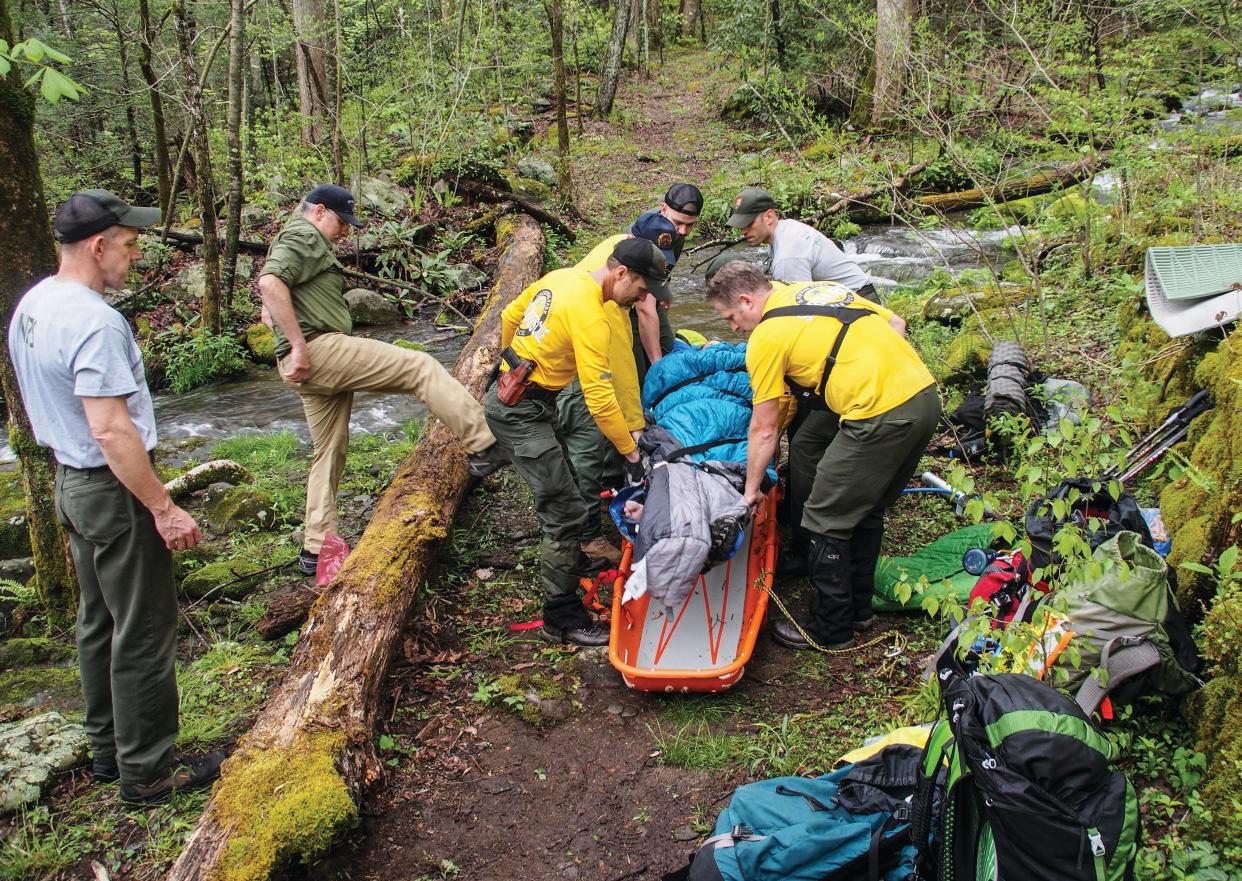
- Oops!Something went wrong.Please try again later.
On a mid-September morning, 14 men and women gather at an abandoned quarry off U.S. 441 a mile or so south of Sugarlands and confront a vertical stone wall that looms 15 feet above them. The sheer rock face culminates in a gently sloping bench that extends 30 feet before reaching another nearly vertical 15-foot cliff.
Wearing mustard-yellow T-shirts identifying them as members of search and rescue (SAR) crews, they’ve gathered to rehearse technical skills that may mark the difference between life and death for severely injured hikers stranded in Great Smoky Mountains National Park’s vast backcountry.
Tech-rescue skills are regarded as “perishable,” meaning that they must be practiced regularly to keep the SAR crew’s capabilities honed and ready for rapid deployment.
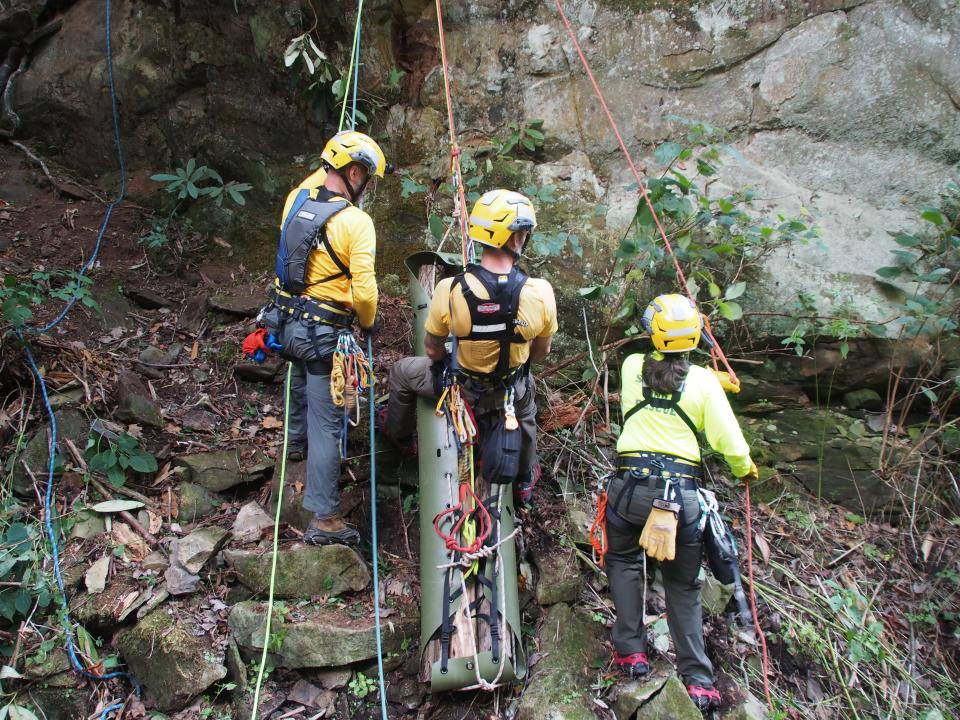
All participants have slipped into climbing harnesses bearing brightly colored bundles of rope slings and clusters of metal climbing devices — tools of the technical rescuer’s trade. One of the park’s three dedicated SAR trucks — containing litters, medical supplies, and technical rescue equipment for land and water — is parked nearby.
Among 12 park staffers are campground administrators, scientists, and resource managers. Smokies law-enforcement ranger Jeff Duckett leads this monthly SAR training session, which is joined by Kenneth Miller and Jonathan Dee, both medical doctors and members of Team BUSAR, a professional SAR organization based in Maryville, Tennessee.
The twin stone faces represent the crux of the challenge: hoisting a 150-pound incapacitated patient nearly 500 vertical feet up the mountain using a complex system of ropes, pulleys, anchors, and ascending and belaying devices (the latter collectively termed rapid ascent and descent (RAD) tools) — and doing so safely, for the victim as well as the rescuers.
More: Word from the Smokies: Taking a walk across ancient land
More: Word from the Smokies: Plant life makes a comeback after 2016 wildfires
Waterfall rescues are alarmingly frequent in the park, and this site’s geologic features roughly replicate the configuration of one of the park’s many waterfalls — absent the cascading water — with an upper tier and a leveled-off middle section leading to a second vertical plunge. Extracting injured patients from such settings can be as harrowing as it is physically and technically taxing.
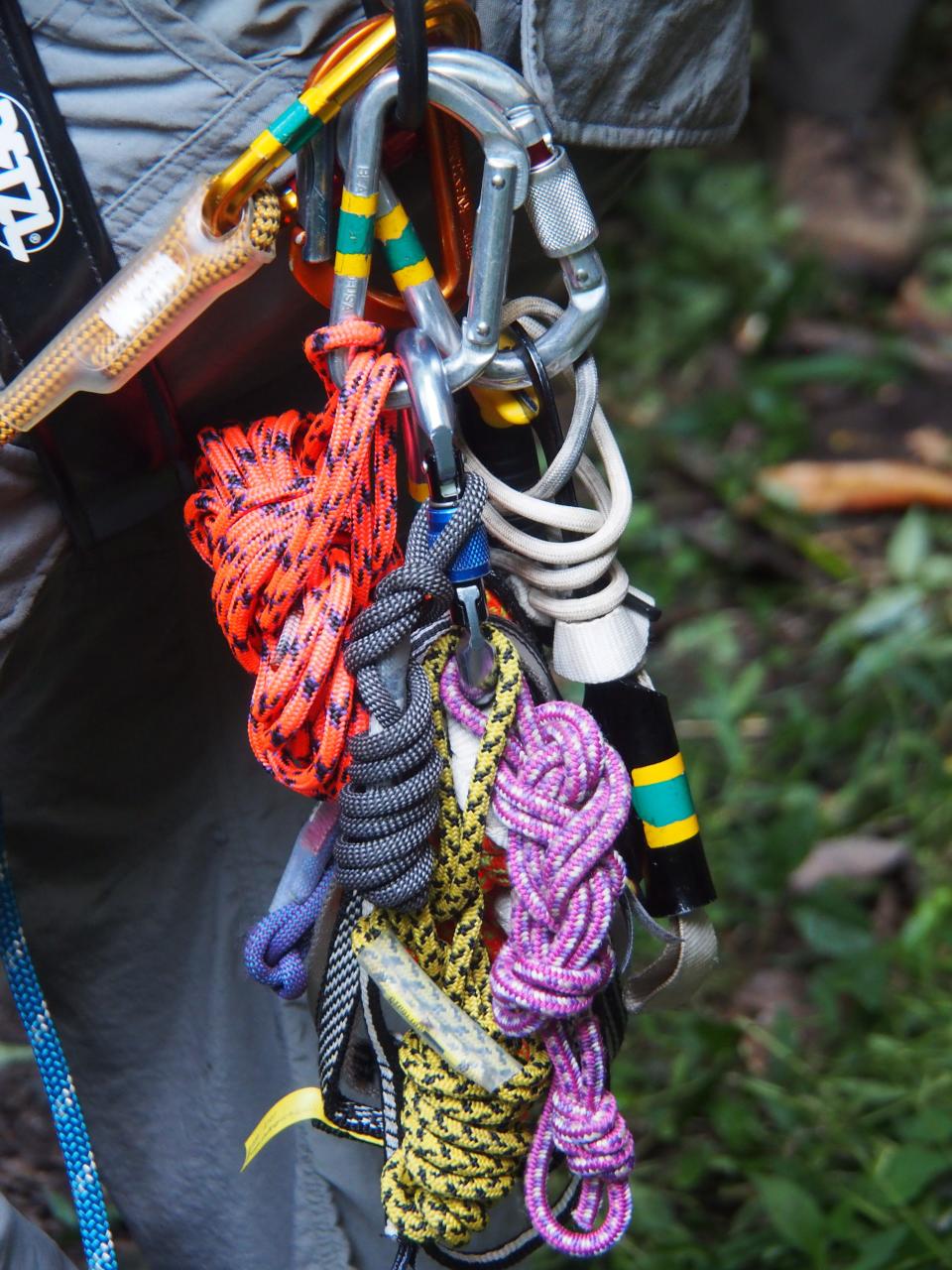
If the current scenario, as well as the victim, were real, the haul would culminate at an ambulance waiting at roadside or beneath a forest canopy open enough to accommodate the mechanical hoist of a hovering Tennessee Army National Guard UH-60 Black Hawk helicopter.
With no small measure of irony, as the training exercise unfolds, the NPS participants’ radios crackle to life late in the morning, conveying the alert that a hiker at Derrick Knob Shelter on the Appalachian Trail is suffering cardiac distress.
“Will that be a carry out?” someone asks Duckett.
“No,” he answers. The situation is far too time sensitive, and the patient would likely perish on the hourslong transport. “They’ll probably call in a helicopter.”
Within 20 minutes of receiving the call for an air evacuation, an Army National Guard Black Hawk arrives at Derrick Knob and hoists the 56-year-old patient into the chopper’s open bay. Onboard are five crew members, and the entire operation takes less than an hour. Owing to the rapid response, the patient arrives at University of Tennessee Medical Center alive.
More: Word from the Smokies: What’s the rub with Charlies Bunion?
More: Word from the Smokies: Bats hang in the balance in wake of disease
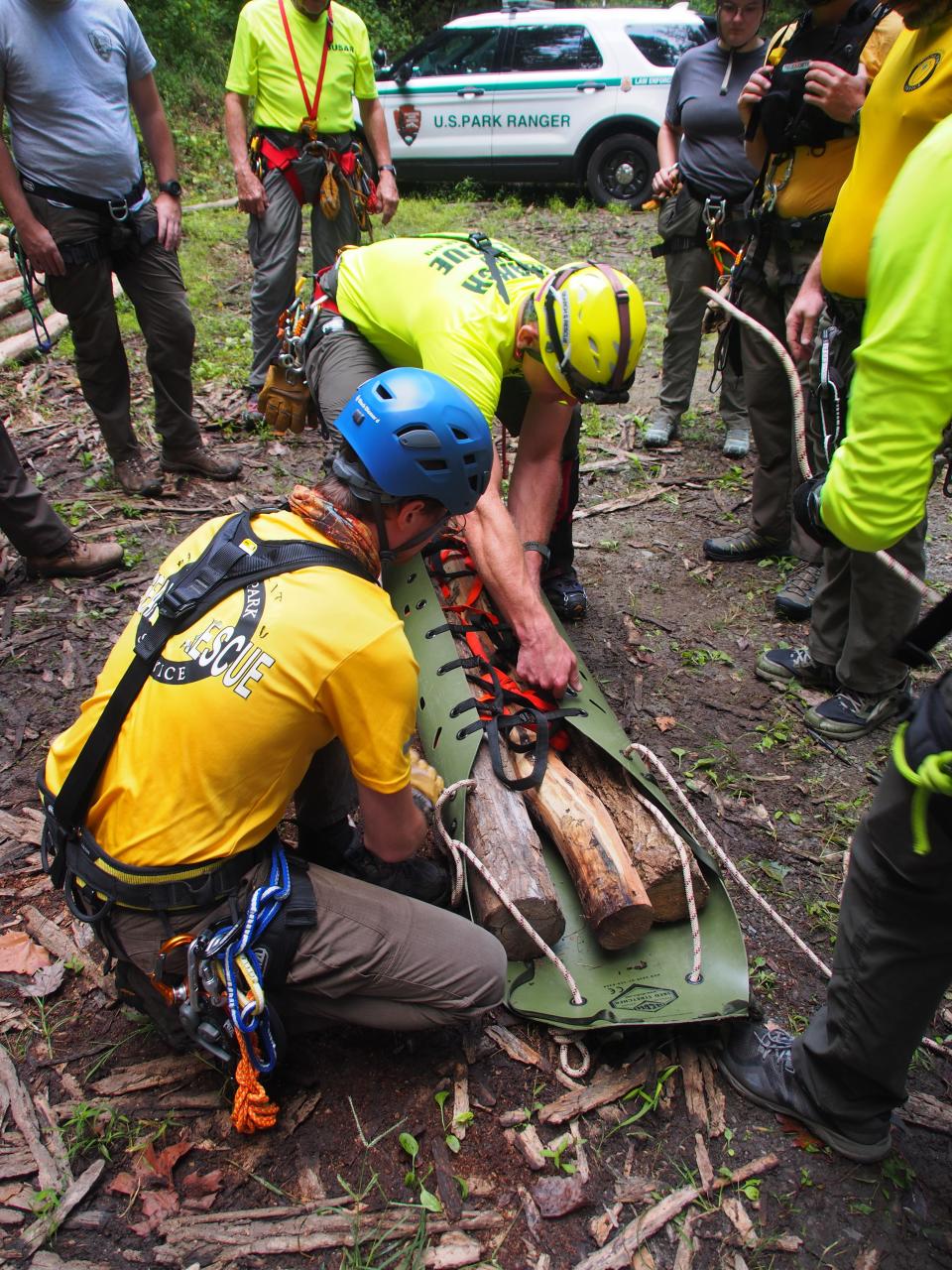
While the Derrick Knob evacuee is an actual human, the tech-rescuers’ ersatz patient is three locust-tree logs bundled together and swaddled in a semi-rigid plastic litter known as a Sked Basic Rescue System. The litter’s slick composition allows it to slide freely over uneven ground, and its slender profile will afford passage through narrow gaps between rocks and trees. Once cinched tight, the Sked’s folded-over sides, top, and bottom shield the “victim” in what vaguely resembles an olive-drab burrito wrap.
Preparation for the hoist consumes more than an hour as participants, one by one, lean back, boots planted against the vertical rock face, and work their ascenders along the taut climbing rope to gain the upper edge. The seasoned veterans assist the few neophytes in the use of technical gear that, to some, appears entirely novel.
Atop the second cliff, a group supervised by Dee of Team BUSAR rigs a hoisting system consisting of a main anchor (a rope doubled up and tied off to a stout tree) attached to two parallel lines trailing down the slope. Twin Clutches allow the two ropes to slide freely as the rescuers pull the litter upward but bite to secure the lines when tension is released. The configuration of the hoist system will afford the rescue crew a 3:1 mechanical advantage.
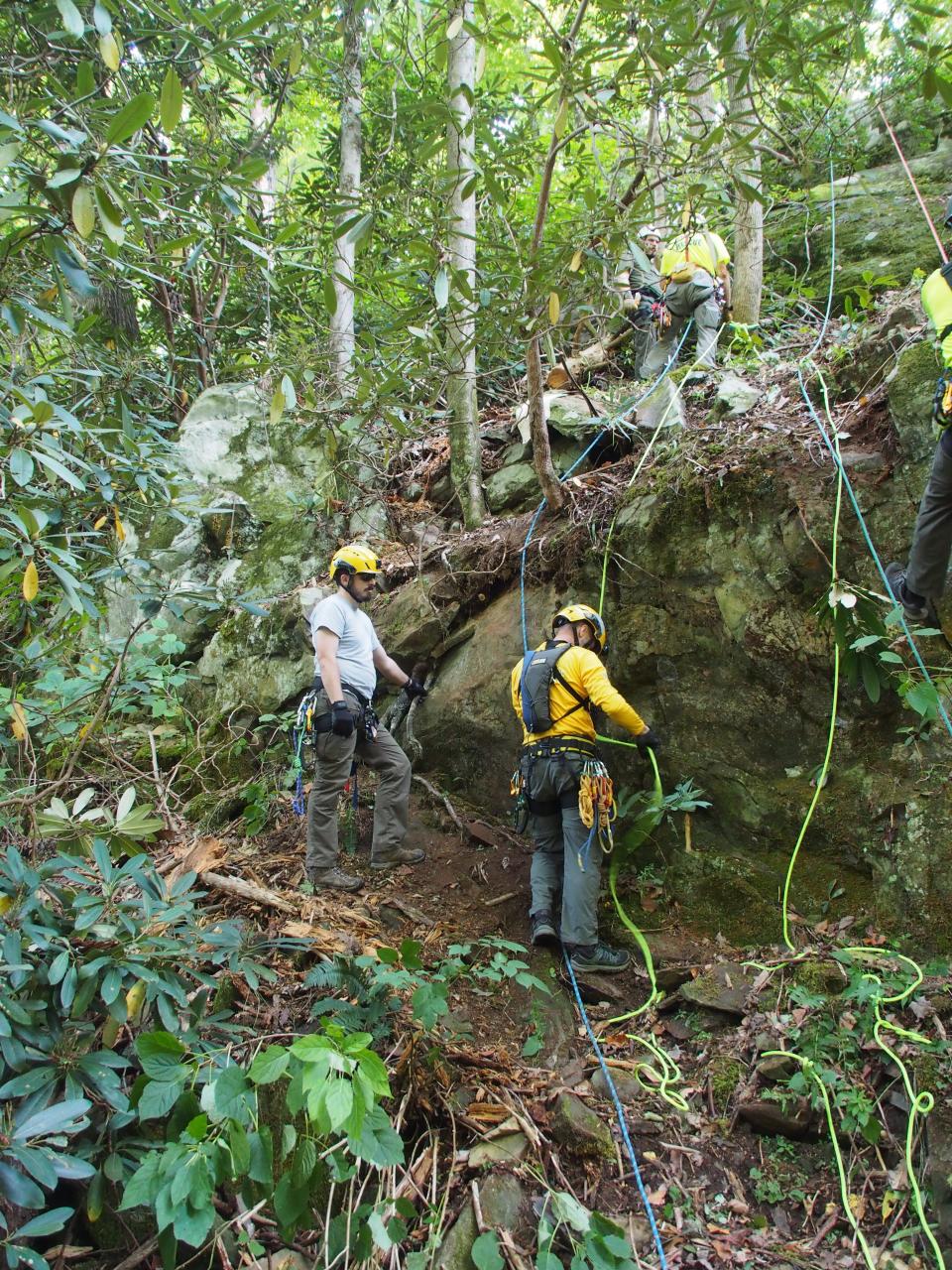
At the base of the first cliff, NPS law-enforcement ranger Wes Mullins and the litter are clipped onto the two main lines. For the hoist, Mullins will straddle the litter, allowing him to monitor and reassure the bundled patient en route. Duckett, on a rope to the left, and NPS protection ranger Holly Bates, tied in on the right, will serve as attendants, ensuring that the litter moves freely as it ascends the pitch.
More: Word from the Smokies: George Ellison — too much and not enough
More: Word from the Smokies: Learn about conservation on your property at Earth Day event
The ropes securing Mullins and the litter are far more resilient than the task requires.
“We use at least a 10-to-1 safety factor,” Duckett explains, “which means each rope is 10 times stronger than it needs to be to safely hoist the patient.” The redundancy of the twin ropes attached to the litter reflects an additional nod to security, increasing the safety factor to 20:1.
As Team BUSAR’s “Doc” Miller observes, “If one rope failed completely, the rescue could continue safely.”
On Duckett’s command, the staged extraction begins. Within 15 minutes, the litter has cleared the first cliff face and soon begins to gain on the second. As the team moves further up the mountain, the hoisting system, including anchors, must be reset at intervals determined by the terrain and the length of rope.
By day’s end, before all participants have descended and slipped out of their harnesses, the exercise will have consumed more than six hours, shorter than some actual SAR operations but not nearly as long as others. And if snow or freezing rain had intruded on the session, Duckett insists that it would have proceeded as planned.
“Despite the weather conditions, we have to keep pushing on,” he says. “It’s all part of the job.”
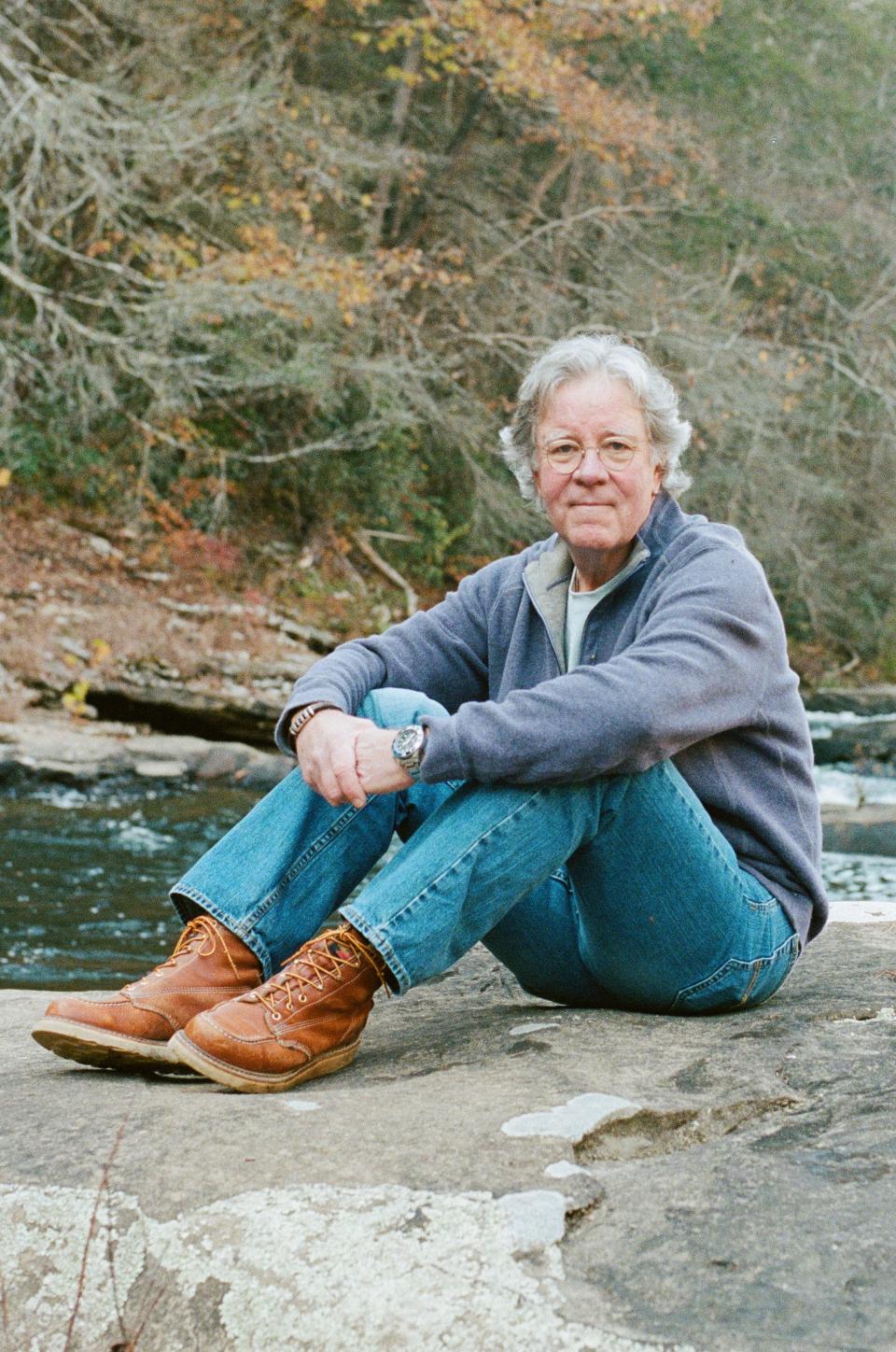
David Brill wrote an in-depth feature on search and rescue for the spring 2023 issue of Smokies Life, available at park bookstores and SmokiesInformation.org. He has authored five nonfiction books including "Into the Mist: Tales of Death, Disaster, Mishaps and Misdeeds, Misfortune and Mayhem in Great Smoky Mountains National Park" published by Great Smoky Mountains Association, which provides this column.
This article originally appeared on Asheville Citizen Times: Word from the Smokies: Training essential to park’s search and rescue

